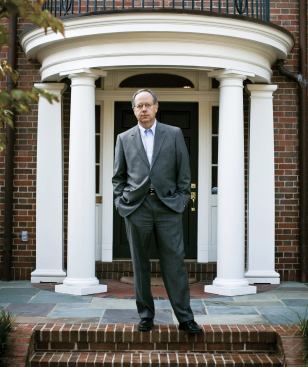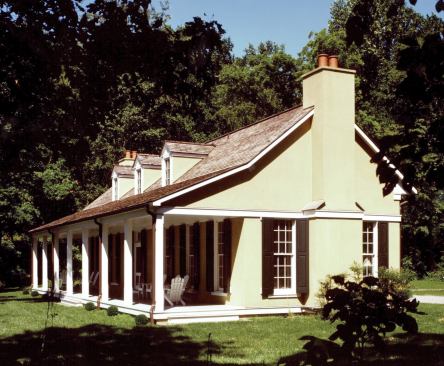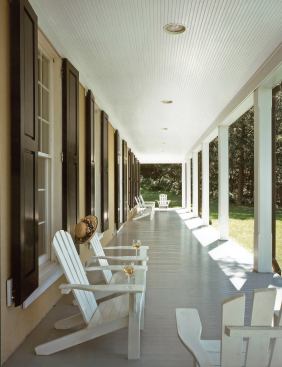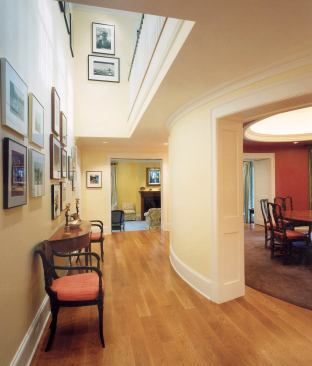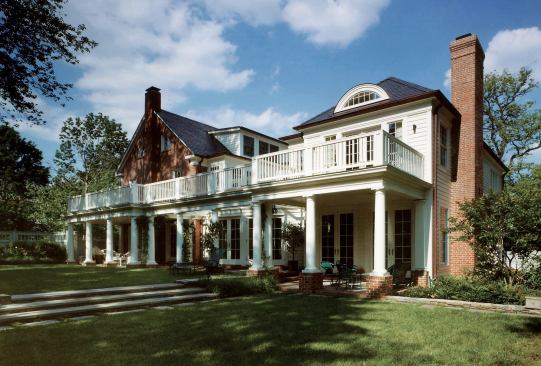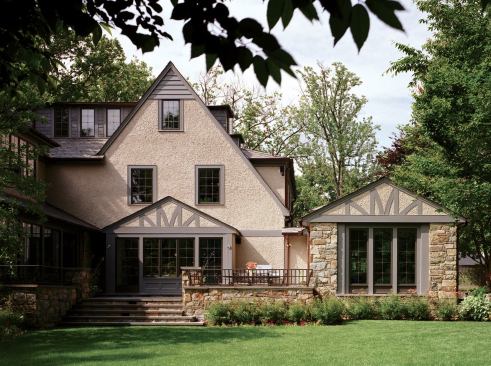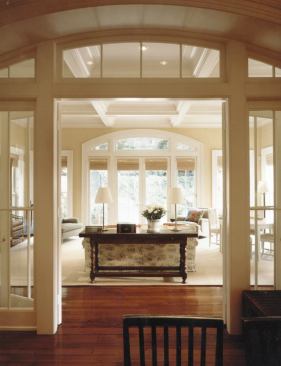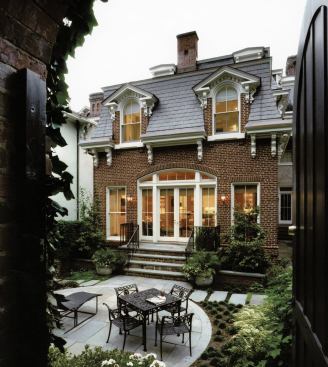Stephen Voss / WpN
In his practice, Stephen Muse strives to create architecture tha…
Believing there are no perfect solutions, the firm initially prepares two to five layout options to show clients. They’re not allowed to vote, only to point out what’s right and wrong in the various schemes. “We may do a little massing drawing that starts to put an image in their minds, but we ask them to have faith that we’ll work out those issues,” Muse explains. After a couple of rounds, the site and floor plans are finalized and the elevations adjusted.
value judgments This process repeats itself whether it’s an ambitious addition to a historic city house or a new residence on 22 acres in rural Montana. For the circa 1916 home of a photographer in Washington, D.C.’s Cleveland Park neighborhood, he tapped the potential of the large, relatively flat lot by reorienting the center-hall Colonial to the west with a two-story hyphen that joins the original house to the rear addition. A side porch spans the length of the residence, whose varied interior volumes are cleverly articulated and reconfigured so that living, dining, and relaxation areas unfold along the west side of the house, spilling out onto the new terrace and garden. The result is a house that would never have been imagined nearly a century ago, but one that, part and parcel, feels like it belongs.
Muse, who recently visited his daughter in Paris, agrees that, yes, the European model of juxtaposing old and new can be successful. But he maintains that it’s the consistent context of streets and squares that allows those contrasts to occur. “You hear over and over, Why can’t we be a city like Paris?” he says. “What we’re not seeing is that what allows I.M. Pei to do that pyramid at the Louvre, no matter what you think about it, is an incredibly consistent, rich texture of building in Paris. What is a city’s foundation made of?”
Rural projects offer Muse’s firm a welcome break from the historic vocabulary. Muse is enthusiastic about a house he’s designing in Montana on barren, windswept land. The clustered buildings will be variously oriented toward views of mountain peaks and a river. He’ll take stone from the site for foundations and walls, and he’s looking into using wind power for electricity. Indeed, one of the firm’s challenges now is figuring out how sustainability figures into this idea of context. Openly wary of a green aesthetic, Muse is currently overseeing construction of a 7,000-square-foot addition to an Art Moderne house in Washington. It includes a geothermal heat pump, underground rainwater-collection tanks, and solar panels on a flat part of the roof. “I feel absolutely no need to display those things,” he says.
Over the course of his career, Muse has not been without his critics, whom he says question why he hasn’t adapted to certain stylistic trends. But he knows who he is as an architect. “There’s a spot between two extremes that says you know what your work is about, and you get better at doing it,” he says. “It’s about the same ideas, but thought-out much better. The hope is that it is made of such solid stuff and is grounded in such good ideas that it’s going to have a lasting effect.”
